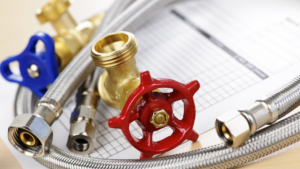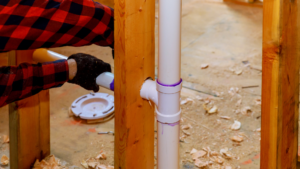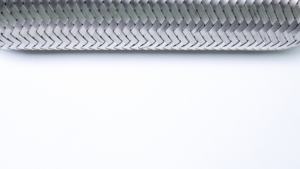Don’t Be Rigid, Choose A Flex Pipe For Water
In the continuously evolving world of plumbing, innovation takes center stage with each passing day. Among the remarkable advancements that have transformed the industry, the flex pipe for water has emerged as a game-changer, and Local Service Pro Plumbing is here to shed light on this revolutionary plumbing solution. From its inception to the countless benefits it offers, let’s delve into the world of flex pipes and understand why they are preferred over traditional rigid pipes.
The Creation of Flex Pipes:
To comprehend the significance of flex pipes, it’s crucial to understand why they were created in the first place. Traditional rigid pipes, commonly made from materials like copper, galvanized steel, or PVC, served their purpose well for decades. However, as plumbing technology evolved and construction methods became more diverse, the limitations of rigid pipes began to surface.
Rigid pipes were known to be unmanageable, requiring complex installation procedures and often leading to leaks and corrosion over time. This required the development of a more adaptable solution that could cater to various plumbing requirements while maintaining durability and reliability.
Enter flex pipes, a breakthrough solution that combines the strength of traditional materials with newfound flexibility and versatility. Local Service Pro Plumbing recognizes the value of innovation and has been at the forefront of introducing this revolutionary plumbing solution to its clients.
The Advantages of Flex Pipe for Water
Flex pipes for water quickly gained fame due to the range of benefits they offer. Unlike their rigid counterparts, flex pipes are crafted from materials like PEX (cross-linked polyethylene) or flexible PVC, which are designed to bend and conform to the plumbing layout. Here are some of the notable advantages that have propelled flex pipes to the top of the list of modern plumbing:
a) Flex pipes are incredibly easy to install compared to rigid pipes. Their flexibility allows them to be maneuvered around obstacles, making installation quicker and more efficient.
b) Traditional rigid pipes often have numerous joints and connections, increasing the likelihood of leaks over time. Flex pipes, on the other hand, come in longer continuous sections, significantly reducing the number of potential leak points. This not only enhances the overall reliability of the plumbing system but also translates to fewer maintenance requirements down the line.
c) One of the primary causes of plumbing system deterioration is corrosion, which is particularly common in rigid pipes made from materials like copper and galvanized steel. Flex pipes, being crafted from modern materials like PEX, are highly corrosion-resistant.
d) Flex pipes often have better insulation properties than rigid pipes, helping to maintain water temperature more effectively. This can lead to energy savings by reducing the need for constant reheating of water, contributing to both environmental sustainability and reduced utility bills.
e) Flex pipes can be employed in a wide range of plumbing applications, from residential to commercial settings. Whether it’s retrofitting an existing system or installing a brand-new plumbing layout, Local Service Pro Plumbing attests to the adaptability and versatility of flex pipes.
The Science Behind Flexibility
The distinguishing factor of flex pipes is their flexibility, which is rooted in their unique construction and material composition. These pipes are typically made from materials like PEX, which are created in a cross-linking process. This process involves chemically bonding the molecules within the material to enhance its structural integrity and flexibility.
The cross-linking of the material gives flex pipes the ability to expand and contract in response to temperature changes and pressure fluctuations. This flexibility not only makes installation easier but also contributes to the overall longevity of the plumbing system by reducing the strain on the pipes.
Why Not Rigid?
While rigid pipes have served as the backbone of plumbing systems for generations, the benefits of flexibility are undeniable. Local Service Pro Plumbing acknowledges the unique advantages that flexible pipes bring to the table and stands by the decision to embrace this innovative solution.
a) Buildings undergo natural movements due to factors like settling and temperature changes. Rigid pipes are prone to cracking or developing leaks when exposed to these movements. Flex pipes, with their ability to bend and accommodate such shifts, provide a great solution that ensures the integrity of the plumbing system over time.
b) Traditional rigid pipes require numerous fittings and connections to navigate corners and obstacles. Each of these fittings presents a potential point of weakness and leakage. Flex pipes, being more malleable, can often be installed in longer continuous sections, drastically reducing the need for fittings and joints and consequently minimizing the chances of leaks.
c) In the event that maintenance or repairs are required, flex pipes simplify the process. Their pliable nature allows for easier access to specific areas, minimizing the need for extensive demolition or disruption. This is particularly beneficial in scenarios where localized repairs are necessary.
The Future of Plumbing is Flexible
As Local Service Pro Plumbing looks to the future, the focus remains on innovation and client satisfaction. Flex pipes have swiftly become a staple in modern plumbing solutions, offering an array of benefits that cater to the demands of modern construction and plumbing practices. With their ease of installation, resistance to leaks and corrosion, and remarkable adaptability, flex pipes have proven their worth in various applications.
Contact Local Service Pro Plumbing and find out why they stand as a testament to the power of embracing change and staying ahead of the curve. Flex pipes for water have transformed the plumbing landscape, paving the way for a new era of efficiency, reliability, and longevity. In the dynamic world of plumbing, flexibility isn’t just an attribute; it’s a pillar that shapes the future of water distribution systems.




